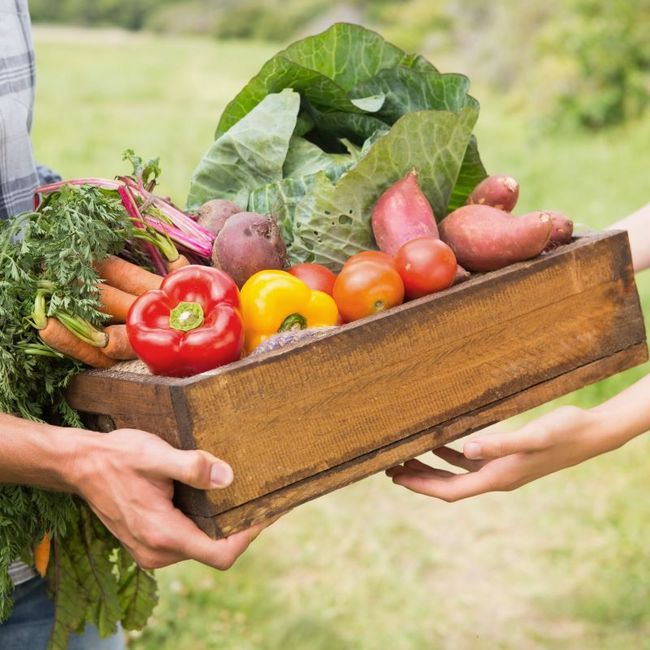✕



✕

Tag:Fruit Vegetable Prescription 2023-09-01 16:46
By participating in produce prescription programs, people at an increased risk for cardiovascular diseases increased their fruit and vegetable consumption and improved their body mass index (BMI), blood sugar and blood pressure levels while decreasing food insecurity. Researchers assessed the health outcomes by pooling data from nine such programs across the US.
Produce prescription programs enable doctors to prescribe fruits and vegetables in addition to medications. Patients commonly receive an electronic card or voucher to access free or discounted produce at grocery retail and farmer’s markets. These programs typically enroll food-insecure households.
“These results indicate produce prescriptions may lay an important foundation for improved health and well-being,” says lead author Kurt Hager, who completed the research while a doctoral student at the Friedman School of Nutrition Science and Policy at Tufts University in Boston.
“We know that food insecurity impacts health through several important pathways, including overall dietary quality, but also through stress and anxiety, mental health and tradeoffs between paying for food and other basic needs such as housing costs, utilities and medications.”
After participation in a produce prescription program, the average consumption of fruit and vegetables increased by 0.85 cups for adults and 0.26 cups daily for children.
Study participants
Fruit and vegetable consumption increased after participating in a produce prescription program.
On average, program participants received US$63 monthly and joined programs for 4-10 months.
The researchers analyzed surveys and medical records from 1,817 children and 2,064 adults enrolled in one of nine produce prescription programs operated by a non-profit organization, Wholesome Wave, from 2014 to 2020.
All program participants had or were at risk of developing heart disease or type 2 diabetes and either experienced food insecurity or were enrolled at a clinic serving a predominately low-income neighborhood.
At the start and after completion of the produce prescription program, participants completed questionnaires on fruit and vegetable consumption, food insecurity and health status. The researchers also tested blood pressure, weight, height and hemoglobin A1c – a measure of blood sugar levels – at baseline and end of the program.
Clinical results
Among adults with diabetes, blood sugar levels decreased by 0.29%. Adults suffering from hypertension dropped their blood pressure by 5-8 mm of mercury, while adults with obesity reduced their BMI by 0.4 kg/m2, though BMI did not change among children.

The researchers note that the improvement for these clinical biomarkers of cardiometabolic health was more remarkable in people with uncontrolled diabetes, obesity or stage 2 hypertension.
“We were excited to see the results, which showed that participants who receive this incentive consume more fruits and vegetables, yielding clinically relevant outcomes,” says senior study author Fang Fang Zhang, a nutritional epidemiologist at the Friedman School.
“Our findings provide important new evidence from a diverse set of programs for meaningful benefits of produce prescriptions, highlighting the need for clinical, policy and healthcare payer and providers’ efforts to implement produce prescription programs.”
Earlier research by the Friedman School predicted that a national produce prescription program could prevent 296,000 cases of cardiovascular disease in the US. Using a simulation model, the researchers estimated that such a program could add 260,000 quality-adjusted life years – years lived with good health – in people (aged 40-79) with diabetes and food insecurity.
Food insecurity and health status
At the start of the study, over half of households reported experiencing food insecurity. Nearly two-thirds of child participants were enrolled in the Supplemental Nutrition Assistance Program, the US’s largest federally funded nutrition program.
By the end of the program, adults were 62% more likely to report better health status after the program, and children 137% more likely. Participants were also one-third less likely to report food insecurity after completing the program.
“Poor nutrition and nutrition insecurity are major drivers of chronic disease globally, including cardiometabolic conditions like Type 2 diabetes and their cardiovascular consequences, including heart failure, heart attack and stroke,” says Mitchell Elkind, chief clinical science officer of the American Heart Association.
The researchers suggest prescription programs may be essential for improved health and well-being.
“This analysis of produce prescription programs illustrates the potential of subsidized produce prescriptions to increase consumption of nutritious fruits and vegetables, reduce food insecurity and, hopefully, improve subjective and objective health measures.”
Elkind explains that the American Heart Association launched a Food is Medicine Initiative in 2022, which will focus on supporting randomized controlled trials to offset any potential bias and more rigorously prove the benefits of produce prescription programs.
The initiative seeks to ensure patients receive medical prescriptions for healthy food to help prevent and manage chronic disease.
Filling the gap
The authors note that the study, published in Circulation: Cardiovascular Quality and Outcomes, has several limitations. For example, it did not include a control group for comparison, instead comparing measurements at the start and end of participation in a produce program.
Moreover, there were high rates of missing survey data for food insecurity and fruit and vegetable intake at the end of some programs. For programs that started during COVID-19, the pandemic may also have affected results as participants were less likely to redeem their vouchers.
“There is much we still need to learn about which programs are likely to be effective, how long they should operate, what happens to patient health outcomes when they end and more,” says first author Hager.
Alison Brown, program director of the Prevention and Population Science Program in the Division of Cardiovascular Sciences at the National Heart, Lung, and Blood Institute, underscores that the “research is a step in the right direction and in alignment with the comprehensive National Strategy on Hunger, Nutrition and Health.”
“However, more rigorous ‘food is medicine’ studies are needed to add to our scientific knowledge and inform evidence-based policies.”
Does Pumpkin Beer Actually Have Real Pumpkin In It
Why Pumpkin Pie Always Tastes Better From A Bakery, According To Professional Bakers
The Best And Worst Store-Bought Cranberry Sauces, Ranked
Frozen Waffles Recalled Over Listeria At Aldi, Walmart, And Other Grocery Stores
Does Costco Sell Individual Gallons Of Milk?
The Best Types Of Fish To Use When Making Homemade Fish Sticks, According To Chefs
About Us Terms of Service Privacy Policy Contact Us
Hotline(+86)17301604571
 Enterprise WeChat
Enterprise WeChat
for Client Service
 EZBuy
EZBuy
WeChat APP
Sinoexpo Digital Platform
Shanghai Sinoexpo Informa Markets International Exhibition Co., Ltd. All rights reserved
沪ICP备05034851号-77
 沪公网安备31010402000543号
沪公网安备31010402000543号